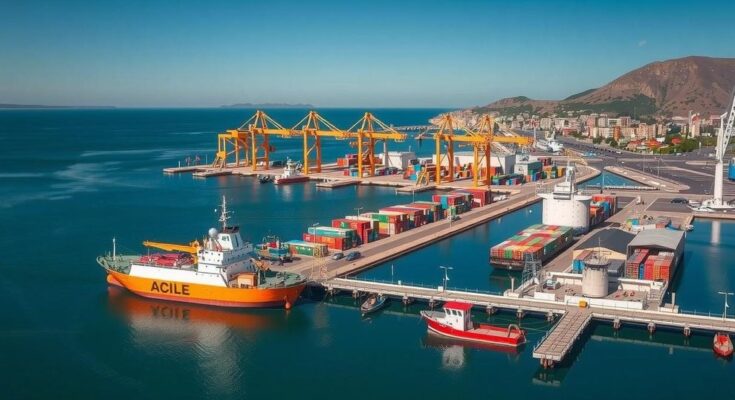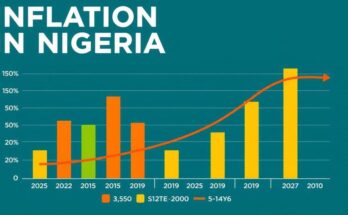The recent seizure of 43 metric tons of sodium carbonate at Arica Port signifies its growing role in Bolivian cocaine trafficking. Misdeclared as “tile adhesive,” the shipment underscores the challenges posed by a historical treaty that limits Chilean customs oversight. Arica’s unique customs arrangements and proximity to Bolivia bolster its importance as a trafficking node amid rising cocaine production and increased cargo volumes from Bolivia.
The significant recent drug bust at Arica Port in Chile highlights its increasing prominence as a trafficking hub for Bolivian drug networks. On November 5, Chilean authorities announced the seizure of 43 metric tons of sodium carbonate, a substance that could have been utilized to manufacture a comparable amount of cocaine. The shipment, originating from Hong Kong and destined for landlocked Bolivia, was misrepresented as ’tile adhesive’ by a transportation company associated with Bolivia. Investigations are underway concerning the consignee and logistical operator linked to Bolivian interests. Mario Carrera, the prosecutor from Arica, underscored the importance of this seizure, stating, “It was one of the most important seizures in the history of the country, due to the quantity and economic value of the drugs that could have been produced.” This event marks the largest confiscation of sodium carbonate in Chilean history, reinforcing the port’s role as a critical point for both the importation of precursor chemicals and the export of cocaine. The proximity of Arica to Bolivia and the unique customs arrangement established through a 1904 treaty, which restricts Chilean oversight of Bolivian cargo, further facilitate this illicit trade. Despite being geographically closer to Peru, Arica’s strategic position is more beneficial for Bolivian drug traffickers. Approximately 75% of the cargo handled at Arica originates from or is destined for Bolivia, with a significant increase—30% more Bolivian cargo in 2023 compared to 2022. Carrera noted that the absence of rigorous inspection from Chilean customs on Bolivian containers invites greater reliance on Arica for drug operations, as shipments face fewer barriers for inspection compared to other origins. This perception of reduced scrutiny is coupled with a favorable international image that enhances Arica’s attractiveness to traffickers. In addition, recent tariff reductions on Bolivian goods flowing through the port, alongside rising cocaine production in Bolivia, are likely to exacerbate drug trafficking activities via the terminal, further solidifying Arica’s significance as a major player in the regional drug trade.
The recent cocaine precursor seizure at Arica Port illustrates the challenges faced in combating drug trafficking in South America, particularly emphasizing the interconnections between Bolivia and Chile in the illicit drug trade. The port’s historical treaties and geographical advantages have positioned it as a critical entry point for narcotics. The increasing volume of Bolivian cargo through Arica reflects broader dynamics in regional drug production and trade, particularly the rising cocaine output in Bolivia amidst an evolving customs landscape that favors traffickers. This context is vital for understanding the implications of such drug seizures and the broader traffic patterns shaping international drug enforcement efforts.
The seizure at Arica Port represents a significant development in the ongoing battle against drug trafficking in South America. The port’s existing infrastructural advantages and customs arrangements are leveraged by Bolivian drug networks to facilitate the importation of precursor chemicals and the exportation of cocaine. As cocaine production in Bolivia rises and tariff reductions on goods passing through Arica further incentivize traffic, this port is poised to remain a pivotal node within the regional cocaine supply chain. The proactive measures taken by Chilean authorities must be complemented by an international framework to effectively address these complexities in drug enforcement.
Original Source: insightcrime.org




